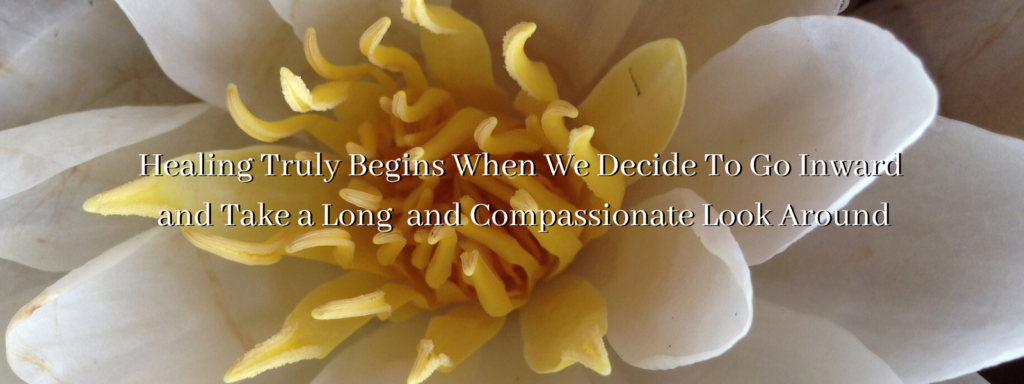Yoga means “Union”
Through the application and practise of the healing art of yoga, we unite our bodies, minds and spirits. Yoga is the oldest known system of physical, mental and spiritual development. It has been passed down through the millennia from gurus to disciples. Devoted disciples become masters through years of daily practise devoted to a lifestyle based on yogic principles, and in turn pass on their knowledge to their students, and so on…
Hatha Yoga
Hatha (Ha and tha) means “sun and moon” or “mind and body”, “yin and yang” “hot and cold” “light and dark”. Described as the yoga of “force”, it is the practise of steadfastly balancing the opposing energies of the body. The unification of opposing energies through the practise of asana, pranayama and meditation. Hatha yoga activates and purifies the energy centres of the body, stilling wanderings of the mind and creating harmony and balance.
Asanas and Pranayama
Asanas and Pranayama are but two of the 8 components of the yoga experience but they are the two that are most often introduced first in the western style of yoga practice. Asana means “posture” or “pausing in steadiness” also “moving into stillness” and “sitting quietly”. By practicing the asanas, we bring health and lightness to the body. Asanas are postures which have evolved over the centuries to exercise every muscle, nerve and gland in the body. Most importantly, asanas train our thoughts and discipline the mind. Although we develop agility, balance, endurance and great vitality, what differentiates yoga from exercise is the mind’s focus in the moment and constant meditation on the prana (life force energy) flowing through our bodies. Pranayama means “rhythmic extension of the breath”. In pranayama, the nostrils, nasal passages and membranes, the windpipe, lungs and diaphragm are the only parts that are actively involved, feeling the force of prana. With proper practice, pranayama can be profoundly healing and transformational. Real breath expansion means learning to optimize the way we exhale, not only the way we inhale. Energy is more effectively recharged through proper and orderly release of the breath, not by strenuously pumping the lungs full of air.
There are many different styles of pranayama, each with a specific focus and purpose. It is best to practice asanas with the natural breath and once use to this, you can begin to experiment with other styles of pranayama. Ujjayi is most typically the style used by experienced yogis in conjunction with an Ashtanga yoga practice. However, Ujjayi can be practiced on its own while sitting up or lying down and is commonly used as a preparation for meditation. Ujjayi means “triumphantly rising”, which refers to the expansion and uprising of prana through the central channel. It is distinguished by a sound that resonates in the throat by toning the epiglottis. The sound is similar to the ocean-like sound you hear when holding a conch shell to your ear. This rhythmic sound serves as a feedback to observe the flow of breath, which should remain steady throughout the practice of asana.
Benefits of Pranayama
-Soothing, calming, peaceful, revitalizing, and meditative
-Strengthens lung tissue, aerates the lungs, soothes and tones the nervous system
-Brings greater control of the breath and floods the bloodstream with prana
Combining Asana & Pranayama
Sometimes it can be a little confusing to remember when to inhale and when to exhale while practicing our asanas. Here are a few helpful hints:
Inhalation in asana: When opening, unfolding, expanding the outer body; when lengthening/extending the spine; when opening arms overhead or to the sides; when coming out of forward bends or lateral standing poses; when going up into a pose against gravity.
Exhalation in asana: When closing, folding or flexing the outer body; when softening the organs; when bringing the arms to the midline; when going into forward bends or lateral standing poses; when releasing down with gravity; when twisting.
OM (A U M)
OM is the primordial cosmic sound of the universe, the purest vibration/sound. There are several interpretations of the sound OM which can be broken down into segments. If you are new to the world of yoga it may be easiest to look at this from a scientific perspective to start with and as your interest grows you may choose to learn more and understand the meaning in its entirety. We know that according to quantum physics, everything in existence is created from vibration. The human body’s vibrational energy can become stuck, congested or have blockages. These blockages can occur as a result of the accumulation of emotional stresses we so often encounter in our day to day lives. Pure vibrational energy resonating through the body has the ability to help cleanse the body and clear out blockages.
Benefits of Chanting OM
– Has a direct vibrational effect on the body’s physiological and energetic systems.
– Creates a response in the body and mind which brings relaxation and calmness.
– Helps focus our energy in the present moment while helping clear the mind.
– Reconnects us with the source energy and instills feelings of safety, security and wellness.
– Purifies the nadis and opens the sixth (third eye) chakra.
Optimizing Your Yoga Practice in a Group Setting
Arrive a few minutes early to class. Enter the yoga studio quietly and use this time for a few moments of meditation or gentle stretching to help get you centered and ready for an optimal practice. If you arrive late, find a place at the back of the room unless otherwise instructed. Never enter or leave during invocation (opening chant or prayer), meditation or Savasana (relaxation Corpse pose). If you must leave, please do so as quietly as possible.
Practice on an empty stomach
It is recommended to wait at least 2 to 3 hours after eating before practicing yoga. If absolutely necessary, have juice or fruit, or very light food. Refrain from sipping water in order to maintain the internal heat you are creating. Drink plenty of pure water after class.
Wear comfortable clothing
The clothes you wear to practice should allow for freedom of movement without restricting stretching, breathing, digestion, or circulation.
Purchase a yoga mat
Having your own yoga mat serves you physically, energetically and hygienically. If you happen to forget your mat, you can rent one for a minimal fee.
Alert the teacher to any injuries prior to class
This will help me know how to adjust you or offer a modified pose when possible or to advise you when to refrain from a certain pose for your own safety.
NAMASTE
Bring the spirit of Namaste into your practice. The Sanskrit word Namaste, said both in greeting and departing, offers love, service, compassion and respect. Translation…”I salute the divine light within you, where you and I are eternally one”. By bringing these qualities to your practice, you are honouring the true spirit of yoga.
Leave all cell phones outside the yoga room. This is for your own sake as well as everyone else’s and to avoid the day that may eventually come when you forget to turn it off and have to submit to holding plank pose for an extra 10 breaths!
Remove your shoes before entering
As well as honouring the Eastern tradition of removing your shoes, you help keep the floors, where you’ll be practicing, clean.
Please be sensitive to other people’s sensitivities
Refrain from wearing any fragrance to class as many people suffer from allergies.
A clean yoga mat is a happy yoga mat
Please clean your personal yoga mat periodically to avoid unpleasant odours and the accumulation of bacteria. You will extend the life of your yoga mat with proper care and will help maintain good gripping ability.
Pay attention to detail
By maintaining good awareness throughout your practice you will enrich and deepen your yoga experience as well as avoid possible injury. Yoga is more than a series of physical poses. It is a healthy state of mind blended with a soft open heart. It is respect for the space and people around you. Yoga is an attitude of humility and service. Through your graceful presence and generous spirit you become and integral part of an inspiring and rewarding group experience.
Bring your yoga experience with you wherever you go
Overcoming challenges we may face on our mats can be reflected into our lives. Remember to try to bring your blissful yoga experience off the mat and into your day. Let’s try to carry that renewed sense of peace, accomplishment, strength and love, we built in our practices today, with us wherever we go. Show your Lusciousness to the world! Pass On Your Yoga Glow!
Notes
There is so much more to be learned about yoga than what I can possibly include on this page. This is just a little general information that may be of interest to those of you wanting to know a little more about this wonderful and timeless practice.





